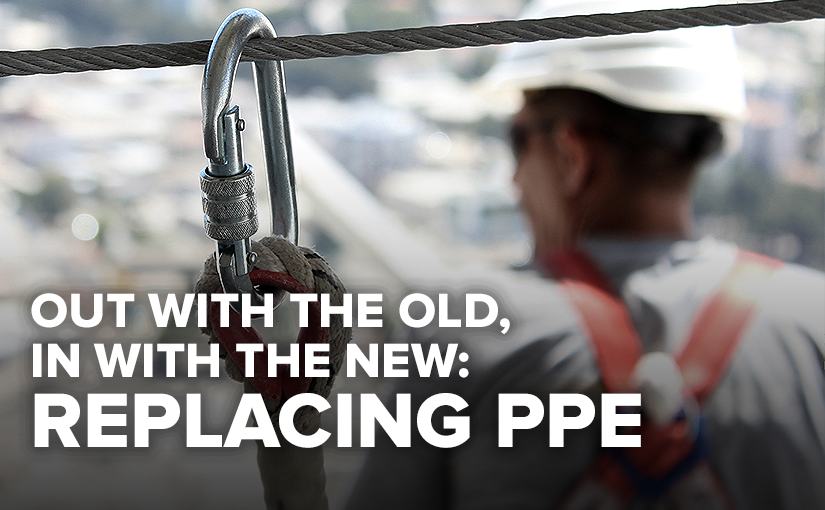There might be more than calendars that need to be replaced in your workplace this January. As an industrial workplace employer, the safety of your workforce falls to you. Personal protective equipment (PPE) is considered the last line of defense for workplace safety. No matter the industry, knowing when to replace safety equipment minimizes failure of worn-out devices and resulting injuries. Here are some ways to know if it’s time to discard the old PPE and bring in some new gear.
Fall Arrest Systems
The number one workplace hazard is fall protection, so it should be at the top of your list when looking at what safety equipment needs replacing. The most important time to inspect a personal fall protection system is after it has been part of a fall event. OSHA guidelines state that these systems should be, “immediately removed from service and shall not be used again for employee protection unless inspected and determined by a competent person to be undamaged and suitable for reuse.”
OSHA-certified inspectors should inspect fall arrest systems yearly. Often, the equipment will have a suggested inspection date instead of an expiration date, as it is no longer required for manufacturers to incorporate one on the label. Any system that fails inspection, “must be withdrawn from service immediately, and should be tagged or marked as unusable, or destroyed,” per OSHA regulations.
Hard Hats
Without a mandated lifespan from OSHA or ANSI, it can be difficult to know when hard hats need replacing. Obviously, if there is visible damage on the exterior or interior, the hard hat needs to be removed from use. Many manufacturers recommend replacing hard hats every five years, regardless of outward appearance, and the interior suspension every 12 months.
A hard hat’s usability also depends on what sort of environment the user is working in. Extreme environments with elements such as increased heat, exposure to chemicals, or sunlight reduce the lifespan of hard hats, making them suitable for only approximately two years before needing replacement.
Shoe Safety
There is one piece of equipment that employees are almost sure to wear home: their shoes or boots. As an employer, the fact that work shoes are worn off-site makes it difficult to ensure that each worker’s footwear is up to snuff. So how do you make sure that what’s being worn complies OSHA and ANSI’s standards?
Regular shoe and boot inspections are a good start. Educating your employees on proper boot maintenance, care, and disposal is another way of ensuring proper protection. Some companies go as far as instituting shoe subsidy programs to encourage workers to replace footwear regularly. Since employees are sometimes responsible for providing their own safety gear, like boots, these subsidy programs ease or erase any potential financial burdens on workers that are associated with having new, appropriate shoes on hand.
Safety Gloves
Different jobs demand different kinds of protection—and that especially applies to hand protection. Once your employees have the right gloves for the job, you’ll also need to ensure that the gloves are in working order before each use.
Start by checking for tears, cuts, holes, or other defects before and after each task. Since gloves can get caught on tools and equipment easily, loose-fitting gloves and gloves with hanging strings should not be worn. Before starting any job, hands and gloves should be clean and dry, and for gloves that may have been contaminated, follow proper disposal procedures. Always keep extra gloves handy for when used ones need replacing.
Protection Provided by US Standard Products
Fully functional safety equipment is the key to keeping your workers well protected. US Standard Products, a nation-wide provider of quality operational and safety products, has the personal protection equipment that you need to keep your employees safe. Call 1-844-877-1700 today to learn how we can help equip your team with the gear necessary to meet OSHA standards.
Keep up with the latest industrial workplace trends by following US Standard Products on social media.

